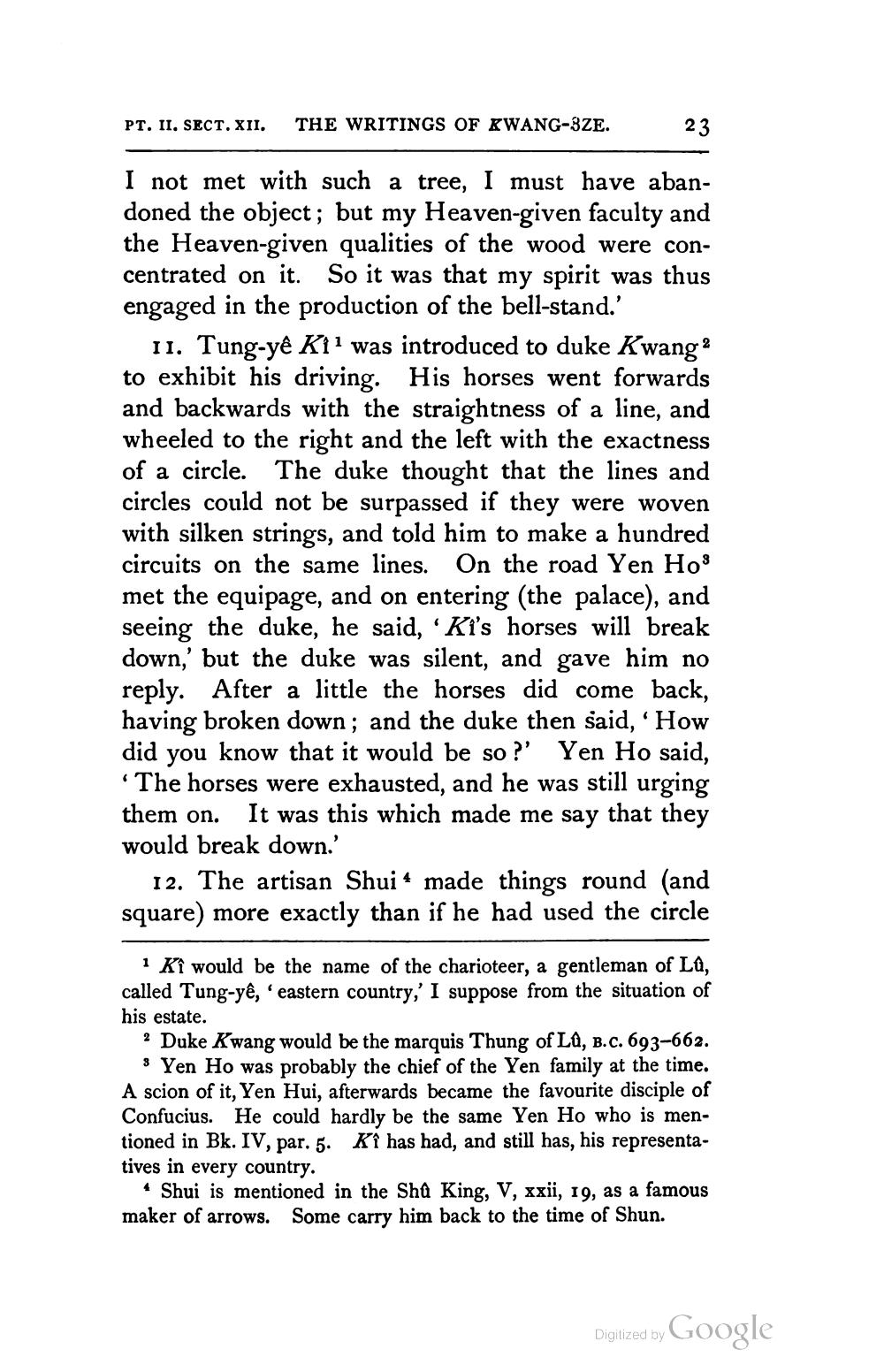________________
PT. II. SECT. XII.
THE WRITINGS OF KWANG-BZE. -
23
I not met with such a tree, I must have abandoned the object; but my Heaven-given faculty and the Heaven-given qualities of the wood were concentrated on it. So it was that my spirit was thus engaged in the production of the bell-stand.'
11. Tung-yê Ki? was introduced to duke Kwang 2 to exhibit his driving. His horses went forwards and backwards with the straightness of a line, and wheeled to the right and the left with the exactness of a circle. The duke thought that the lines and circles could not be surpassed if they were woven with silken strings, and told him to make a hundred circuits on the same lines. On the road Yen Hos met the equipage, and on entering (the palace), and seeing the duke, he said, 'Ki's horses will break down,' but the duke was silent, and gave him no reply. After a little the horses did come back, having broken down; and the duke then said, 'How did you know that it would be so ?' Yen Ho said, 'The horses were exhausted, and he was still urging them on. It was this which made me say that they would break down.'
12. The artisan Shui 4 made things round (and square) more exactly than if he had used the circle
1 Ki would be the name of the charioteer, a gentleman of Lü, called Tung-yê, eastern country,' I suppose from the situation of his estate.
? Duke Kwang would be the marquis Thung of LQ, B.C. 693-662.
3 Yen Ho was probably the chief of the Yen family at the time. A scion of it, Yen Hui, afterwards became the favourite disciple of Confucius. He could hardly be the same Yen Ho who is mentioned in Bk. IV, par. 5. Kî has had, and still has, his representatives in every country.
* Shui is mentioned in the Sha King, V, xxii, 19, as a famous maker of arrows. Some carry him back to the time of Shun.
Digitized by Google




